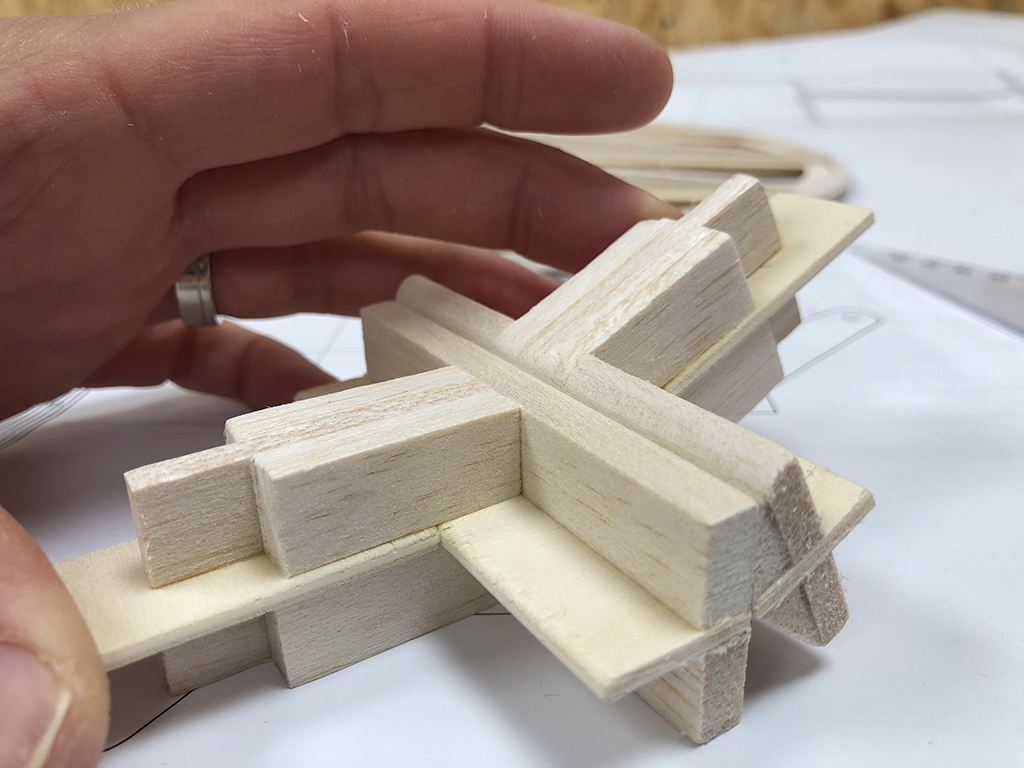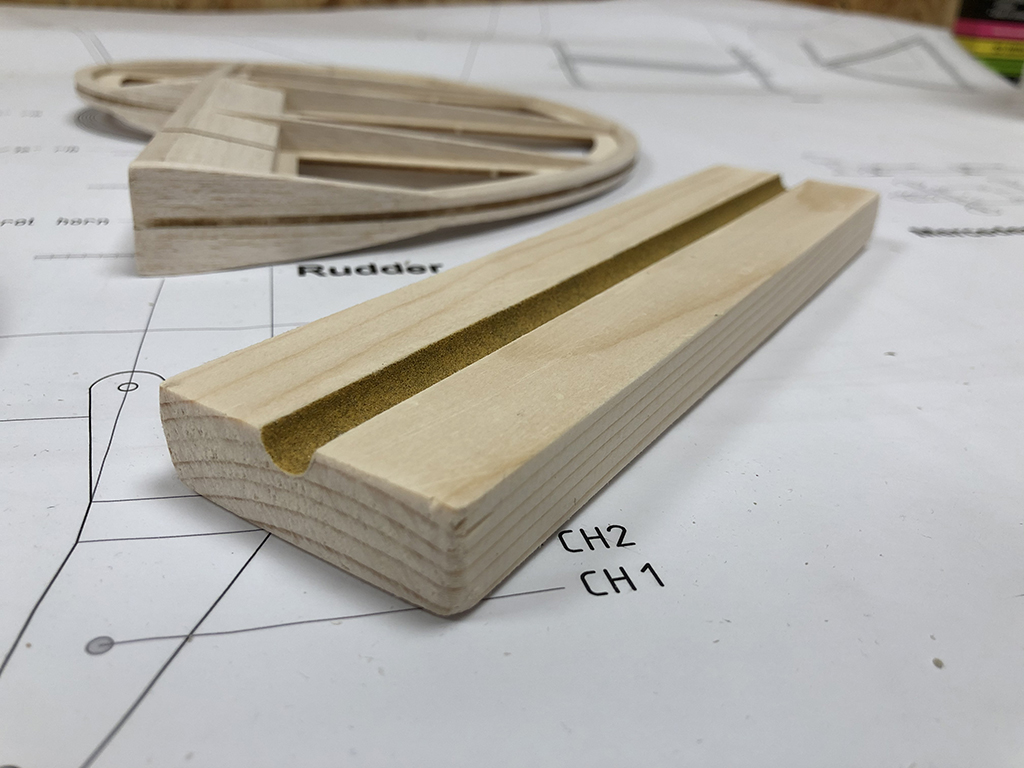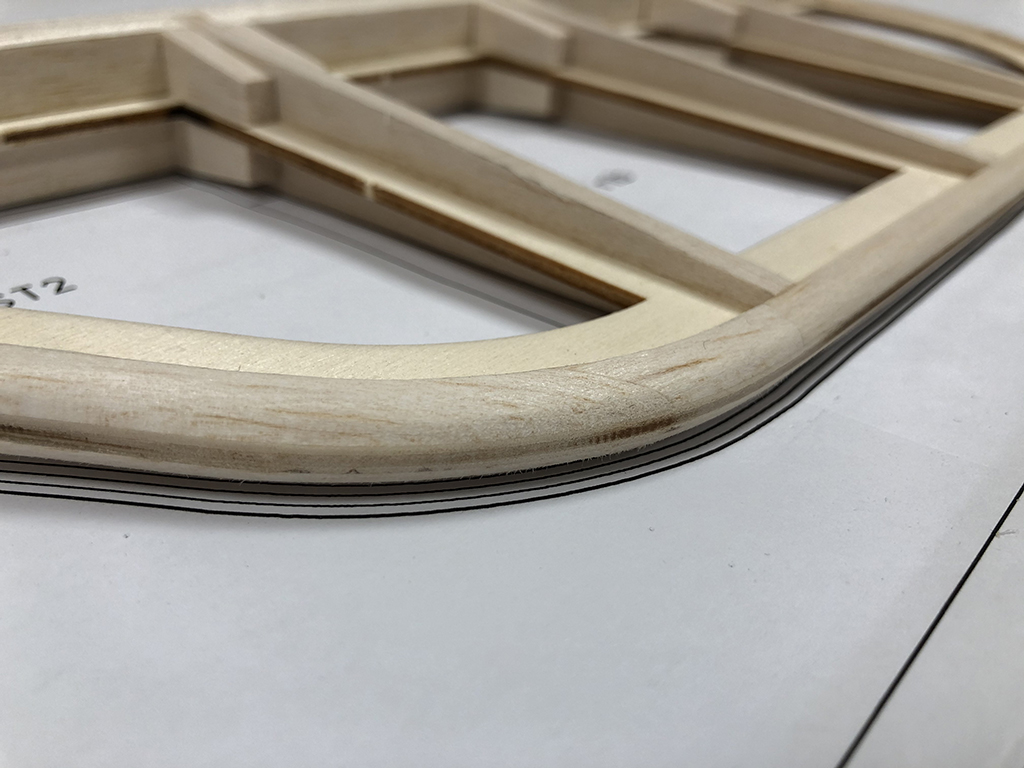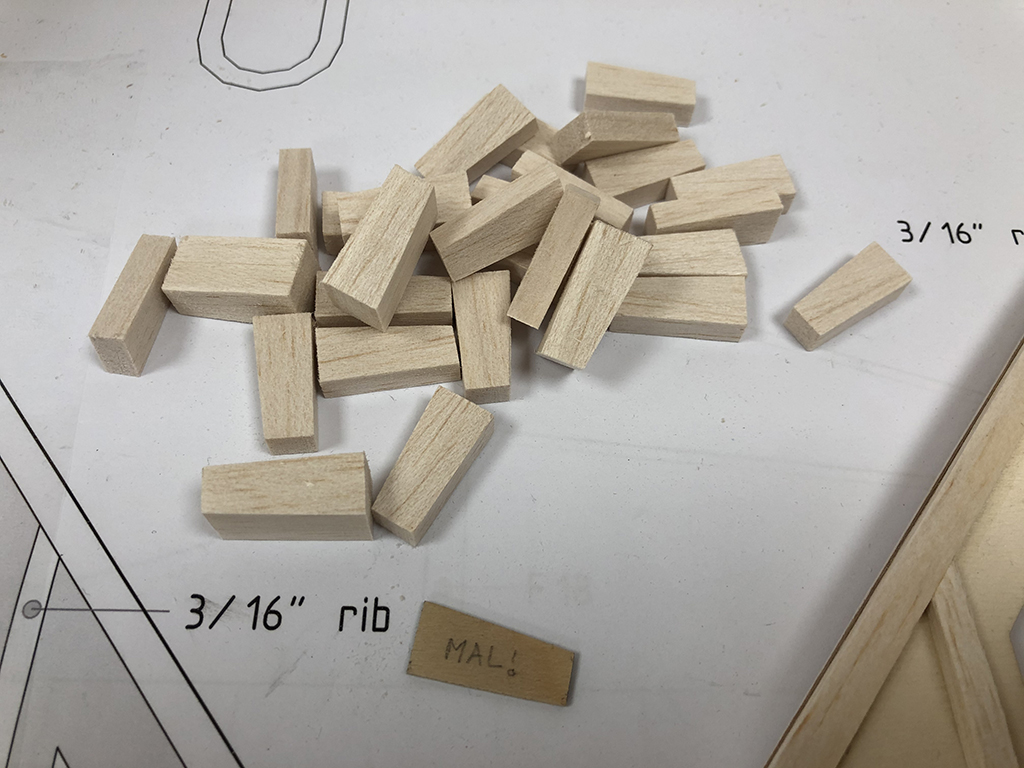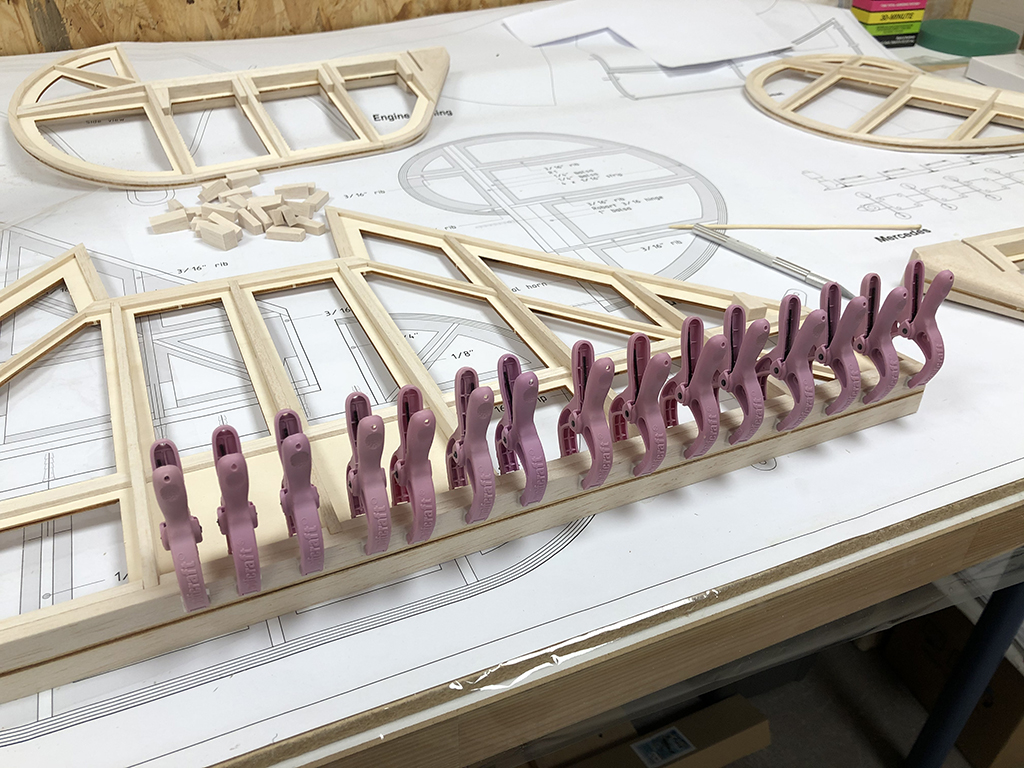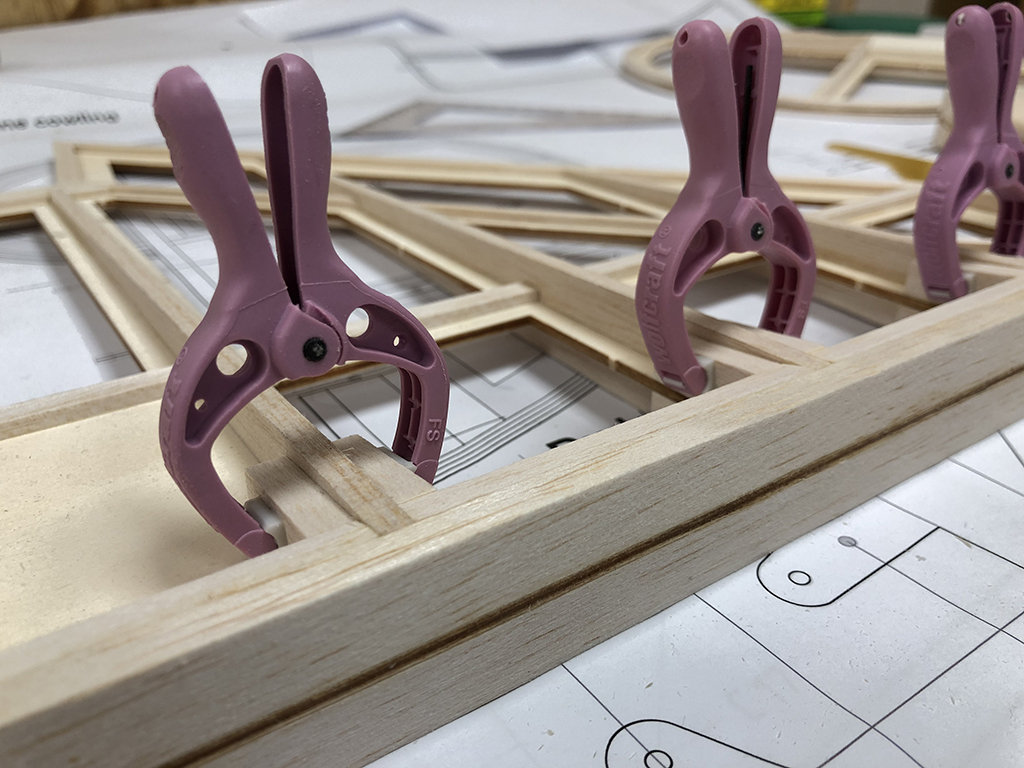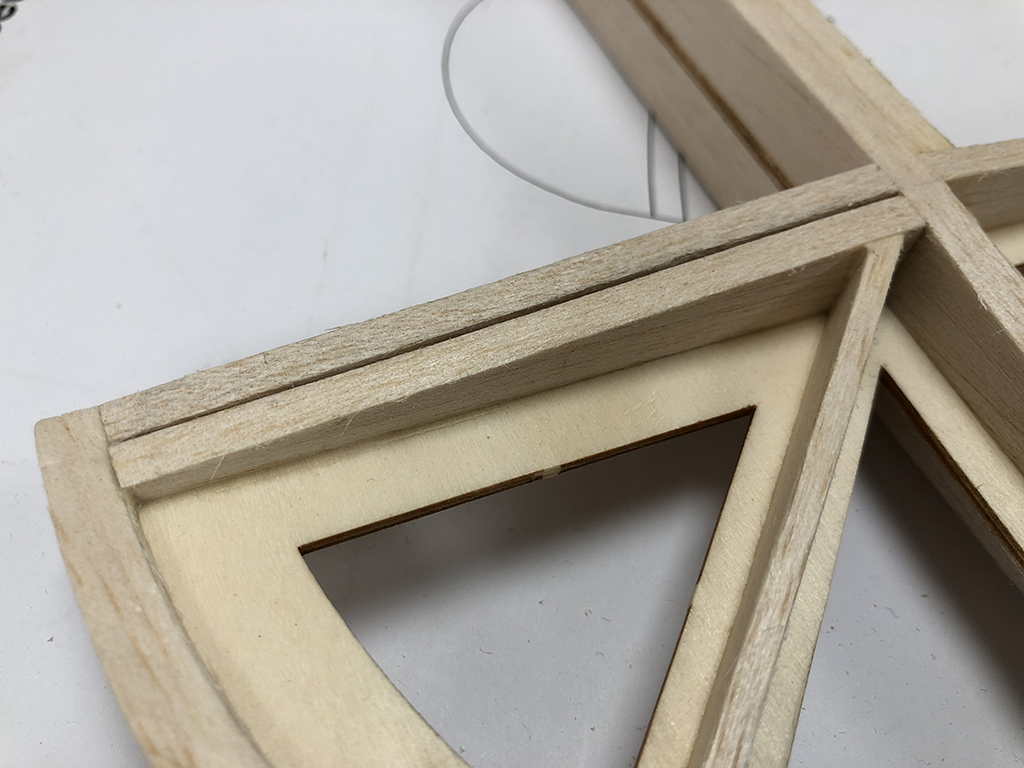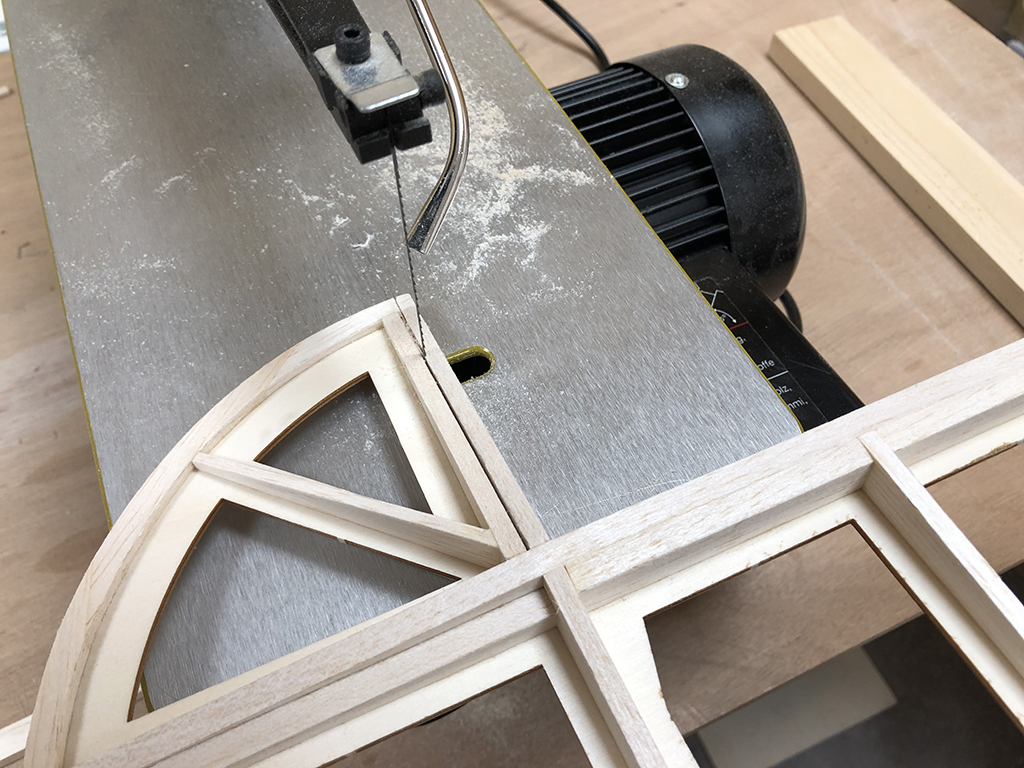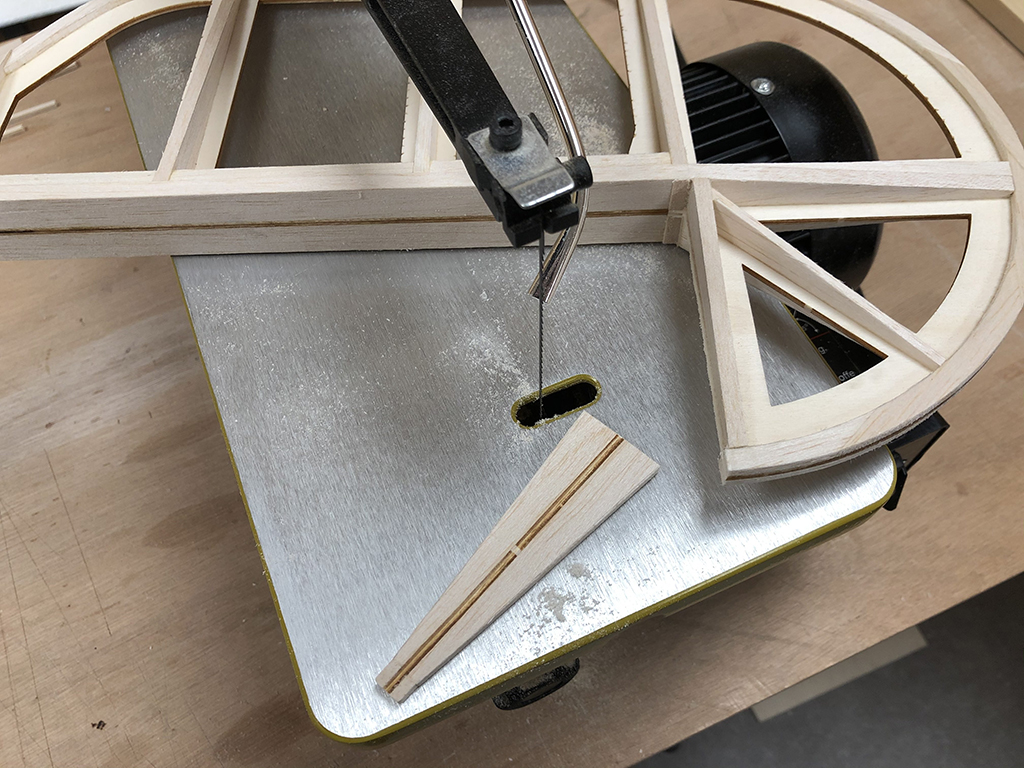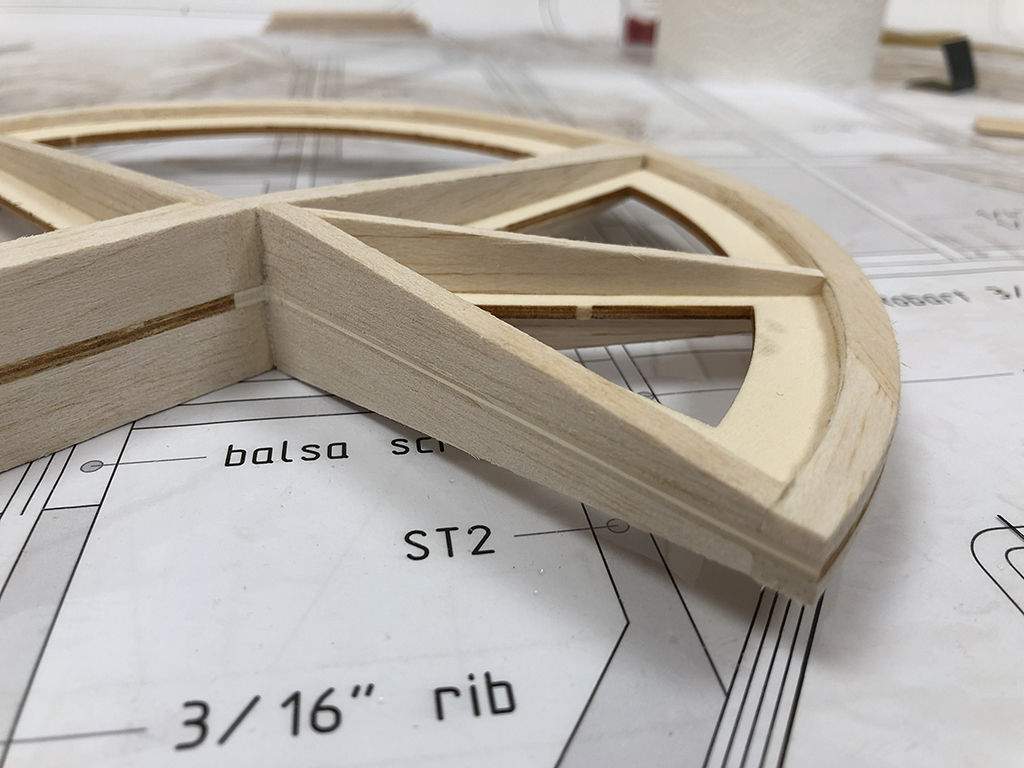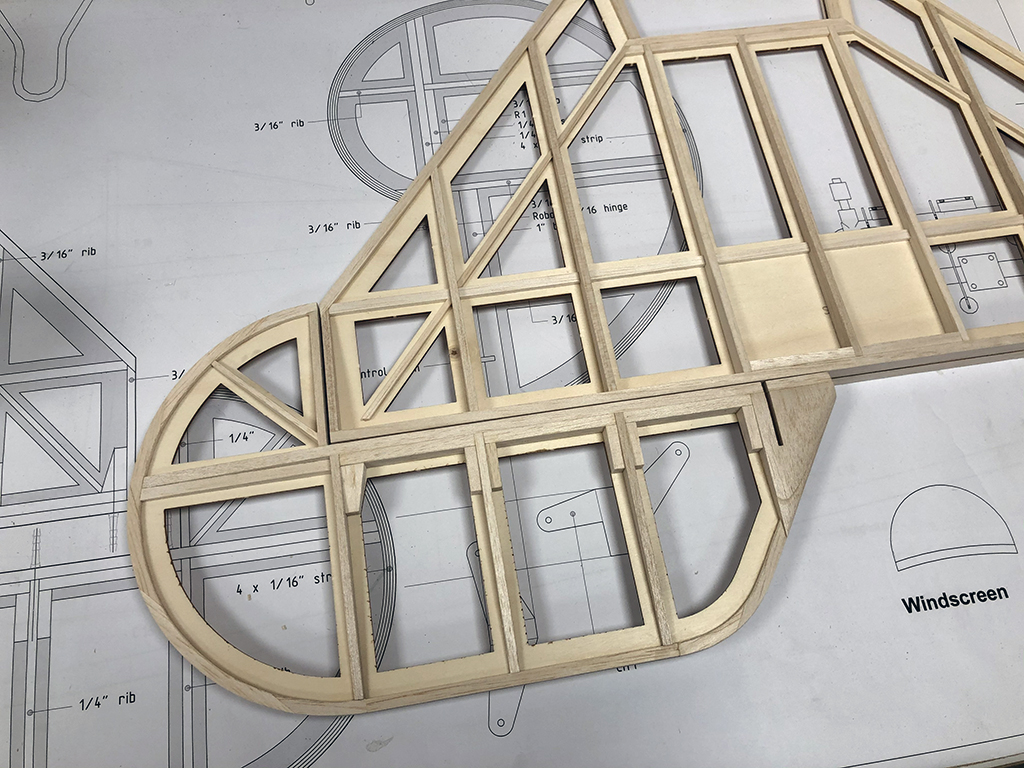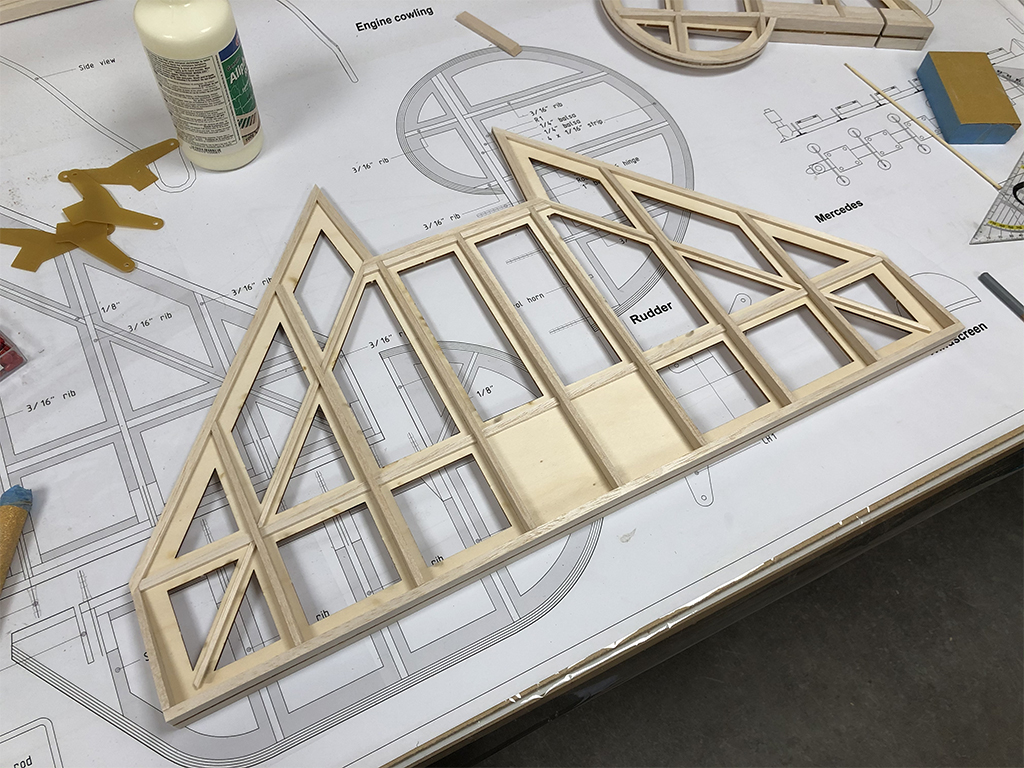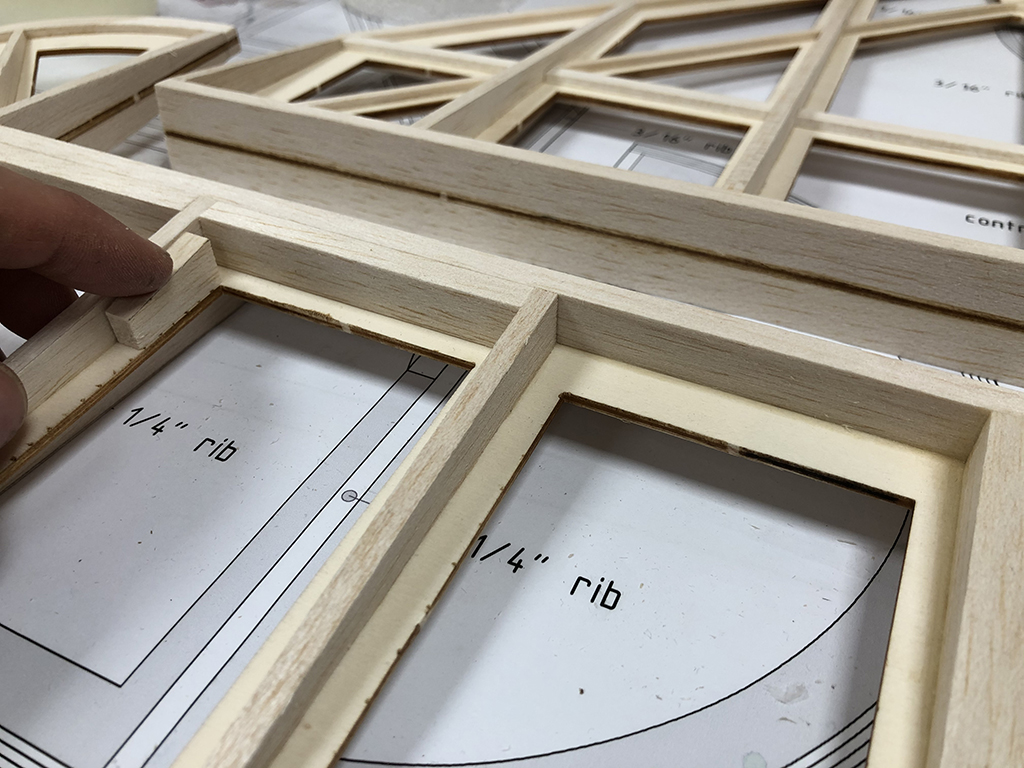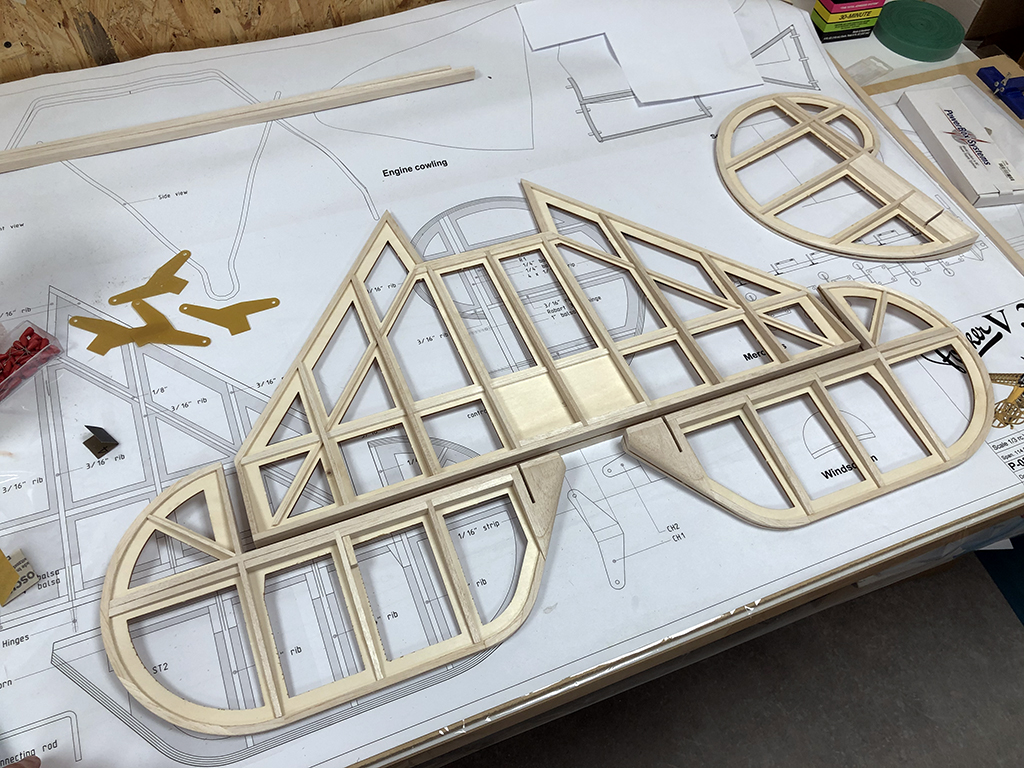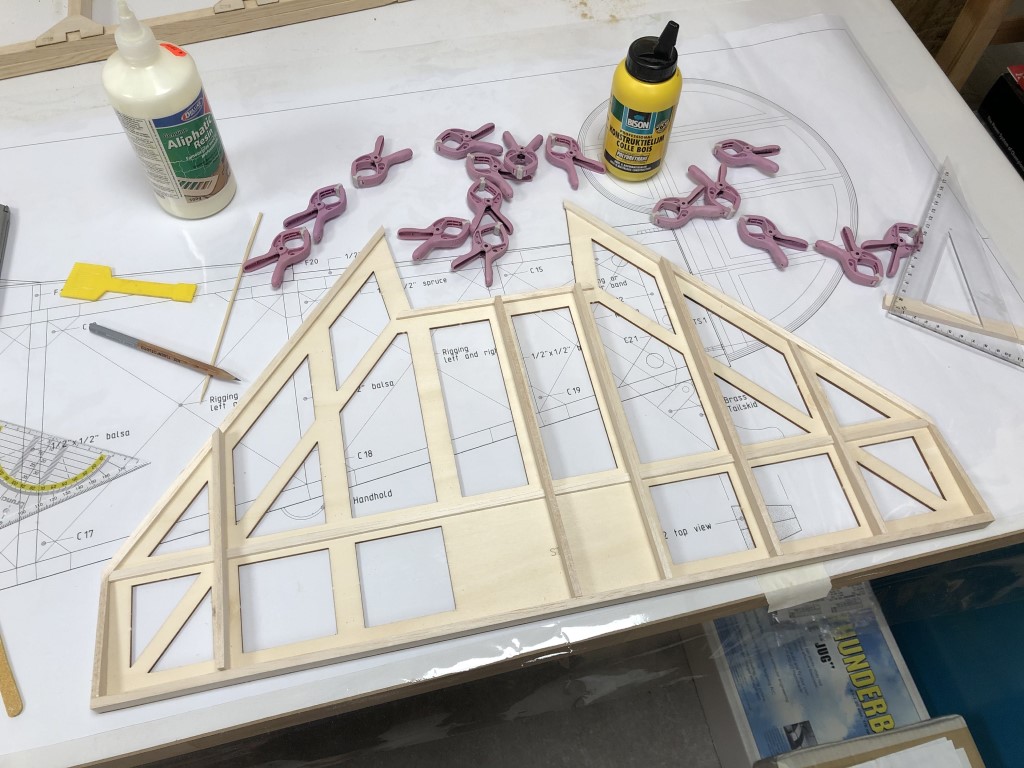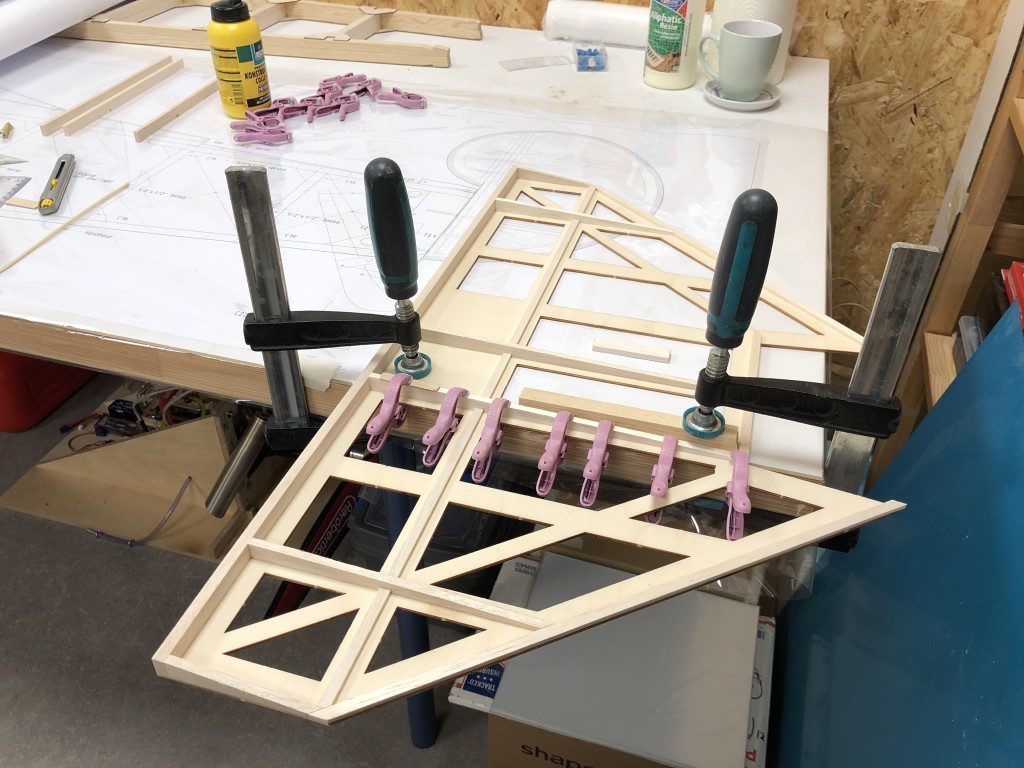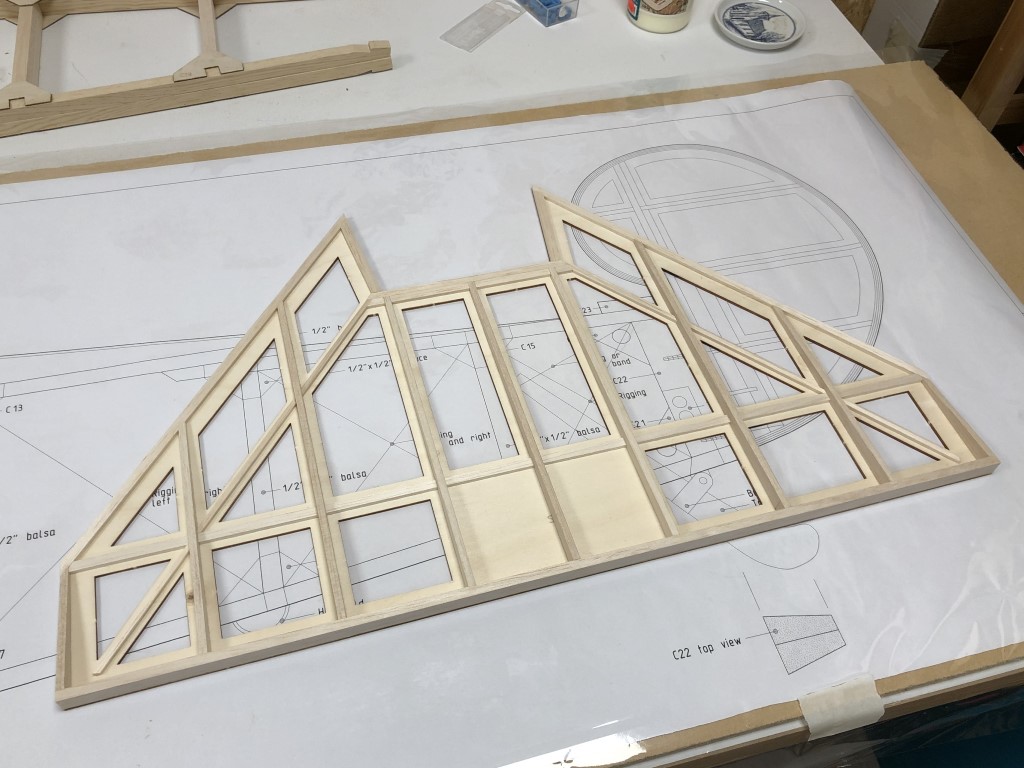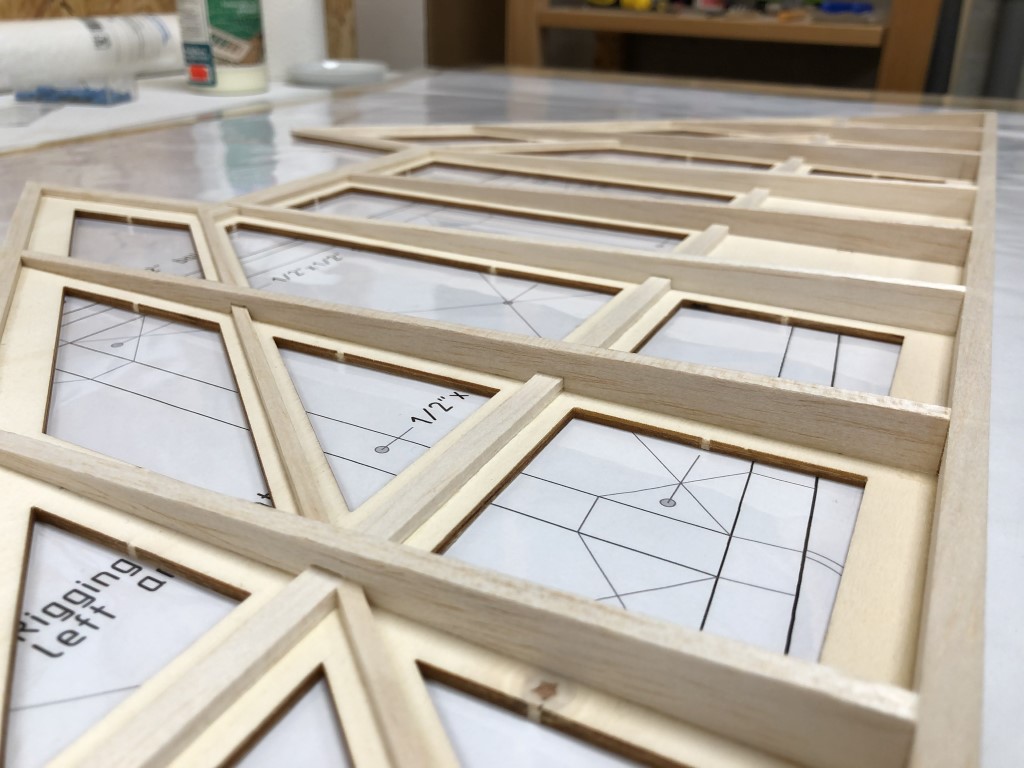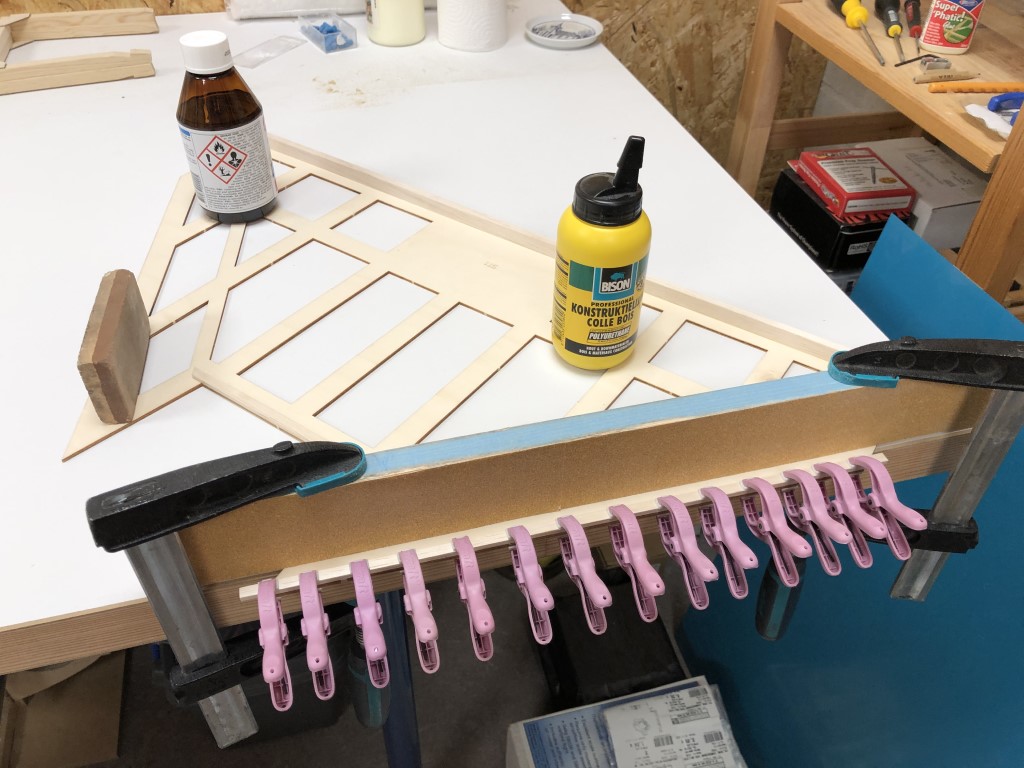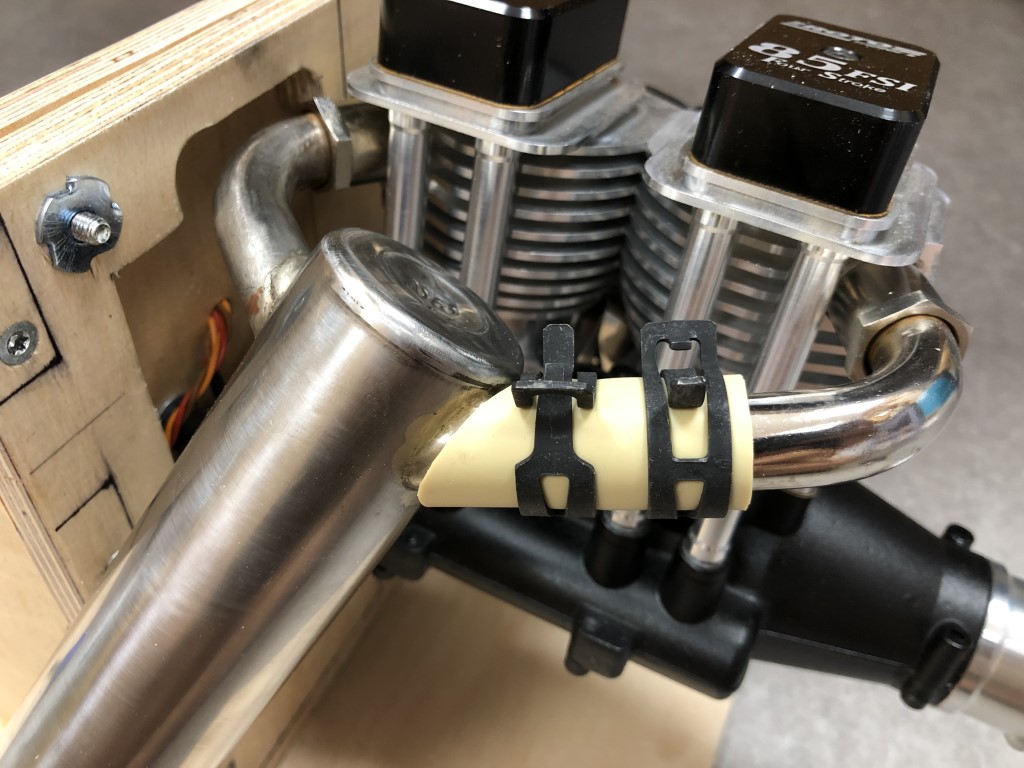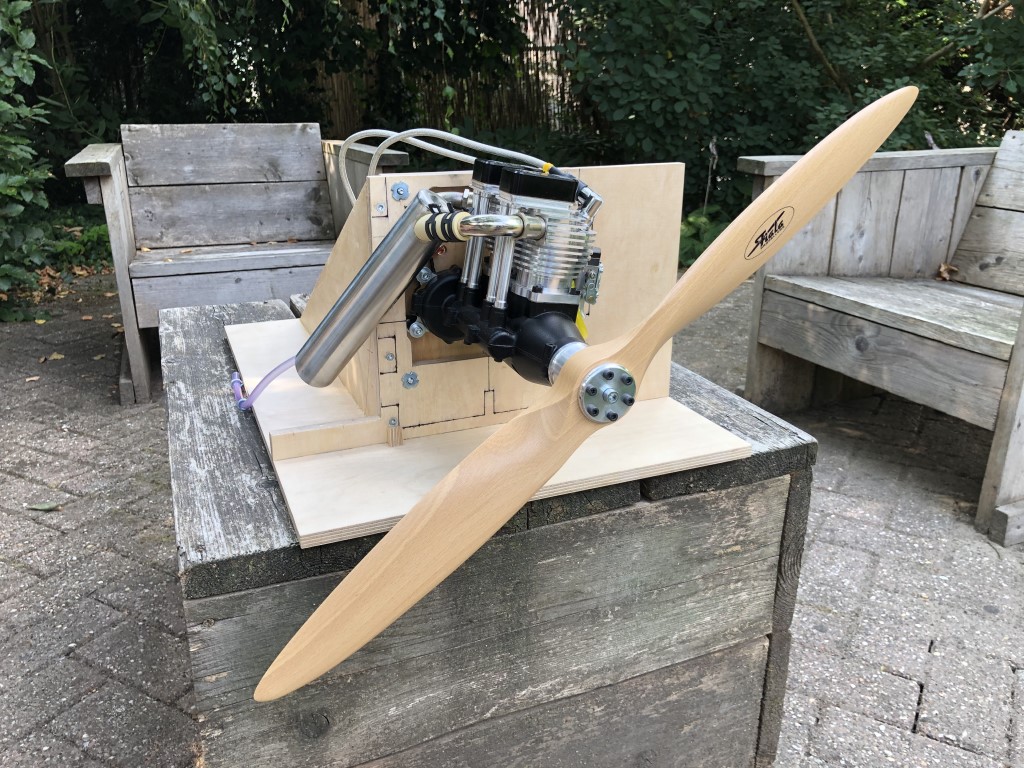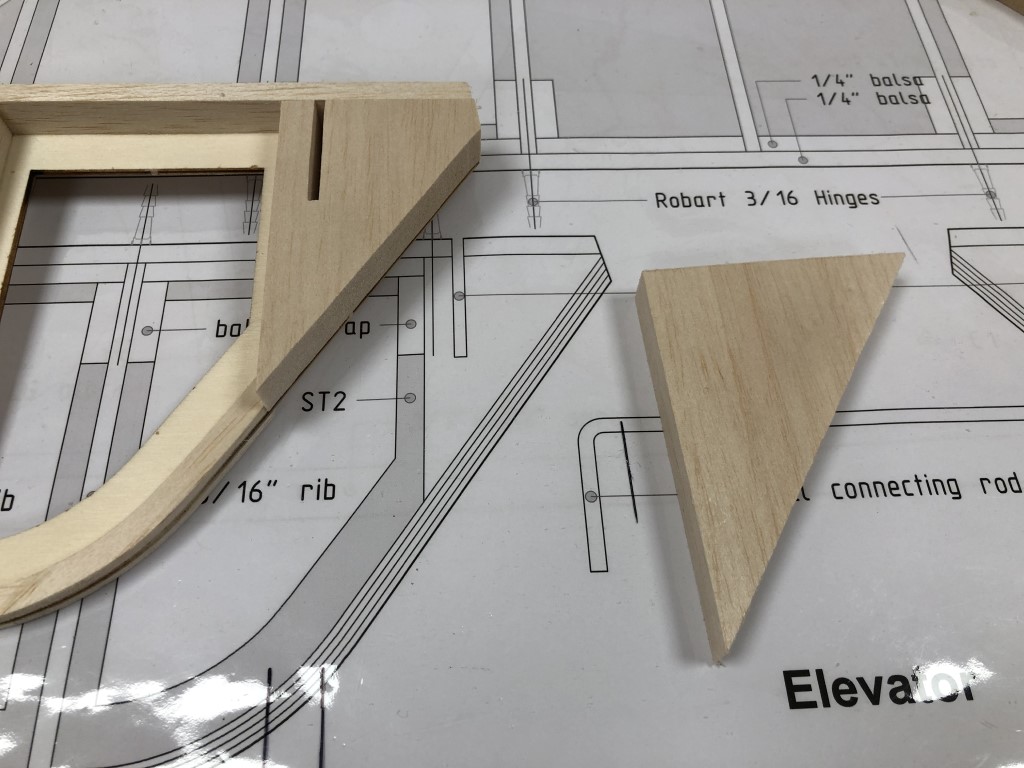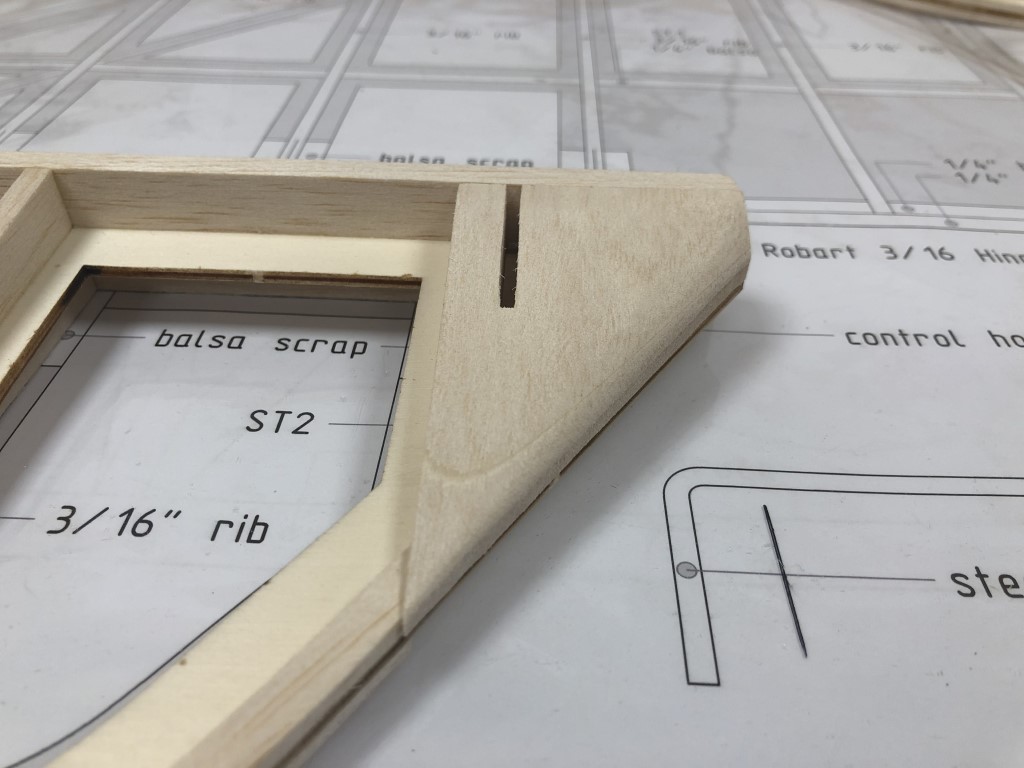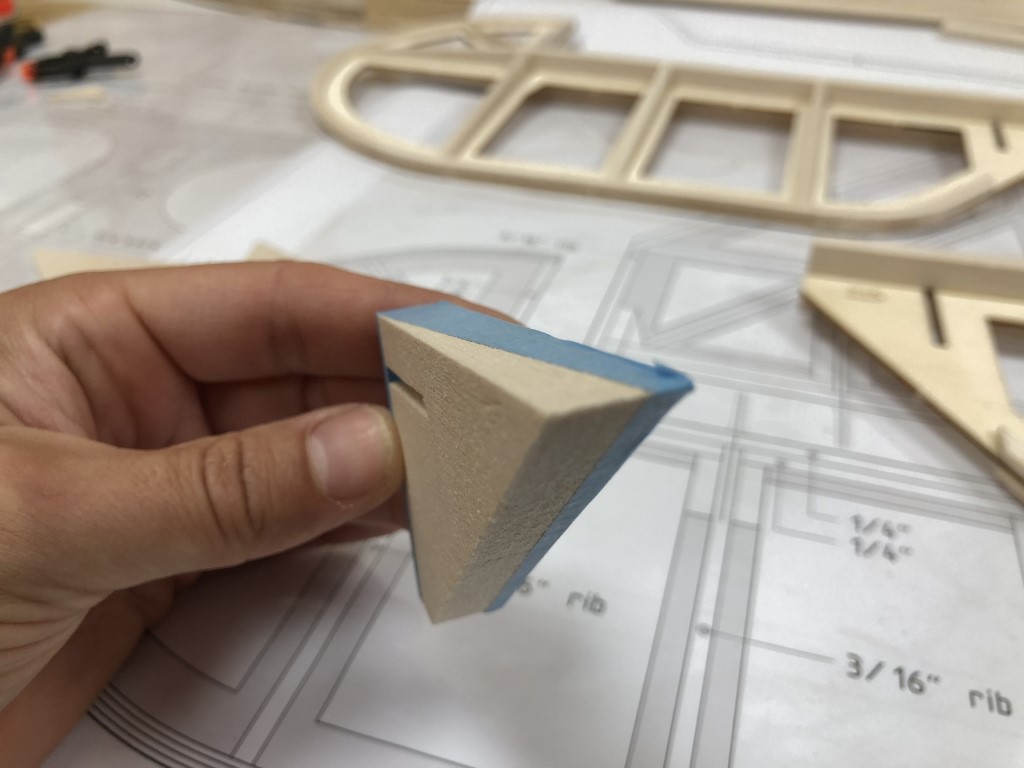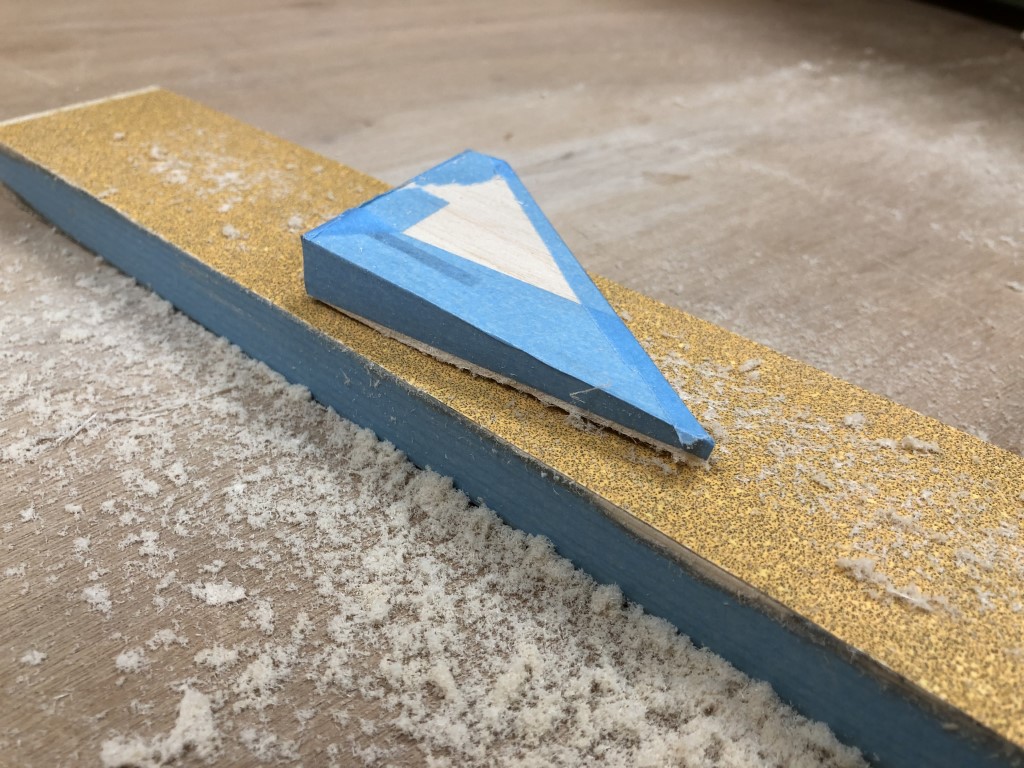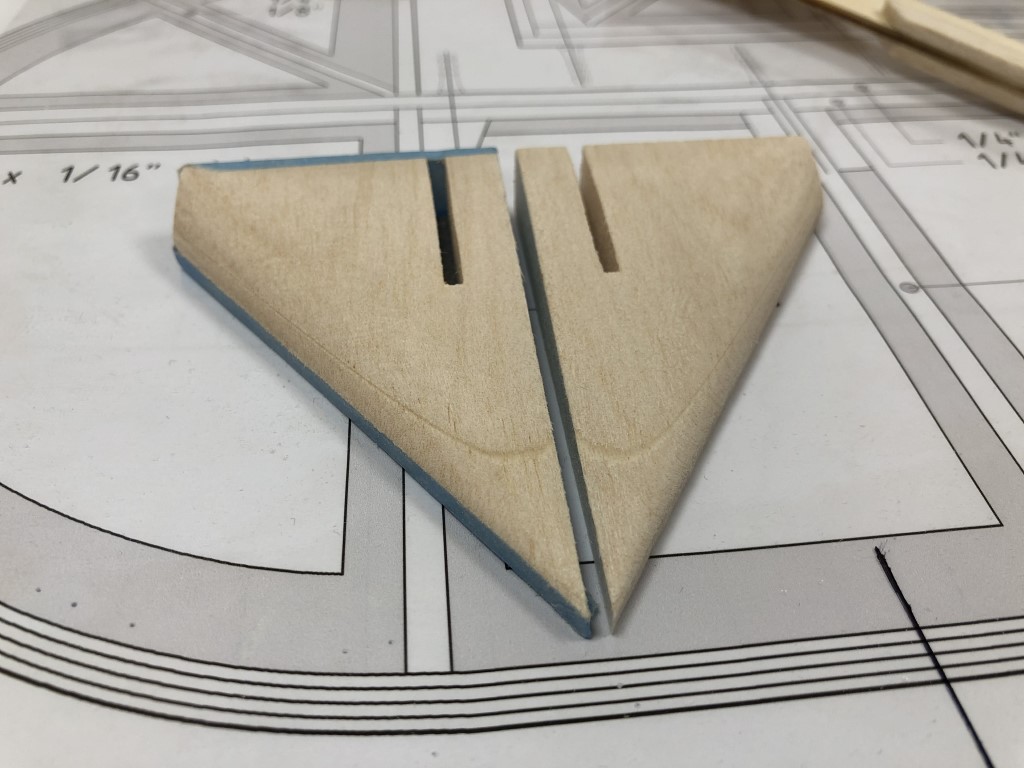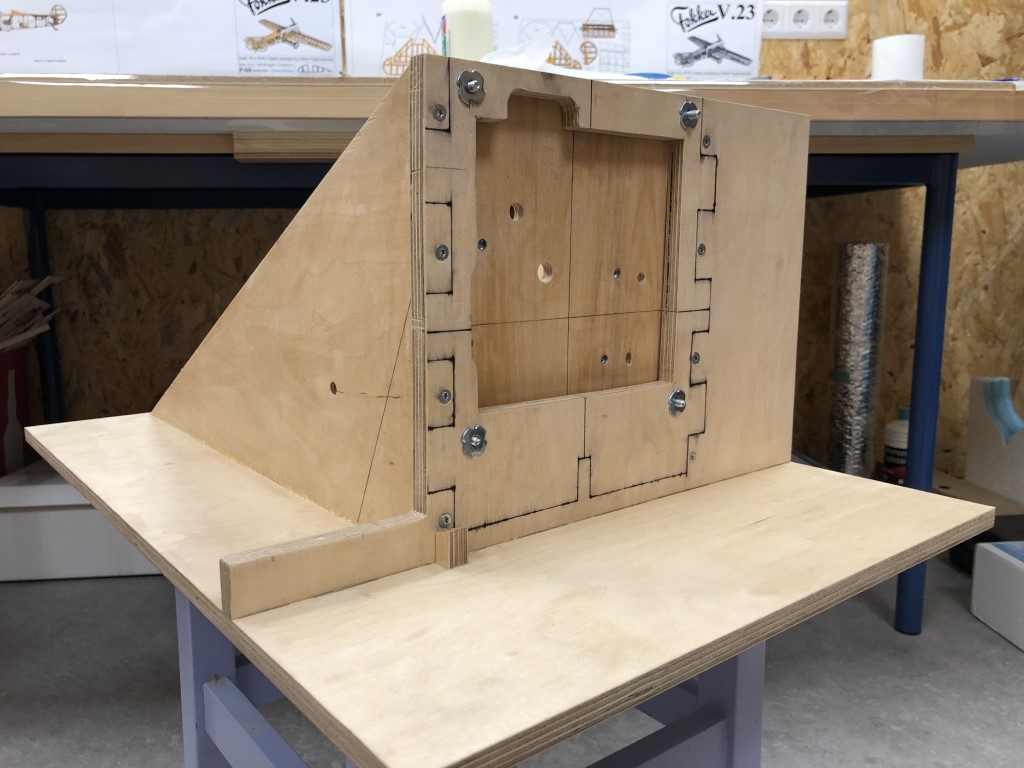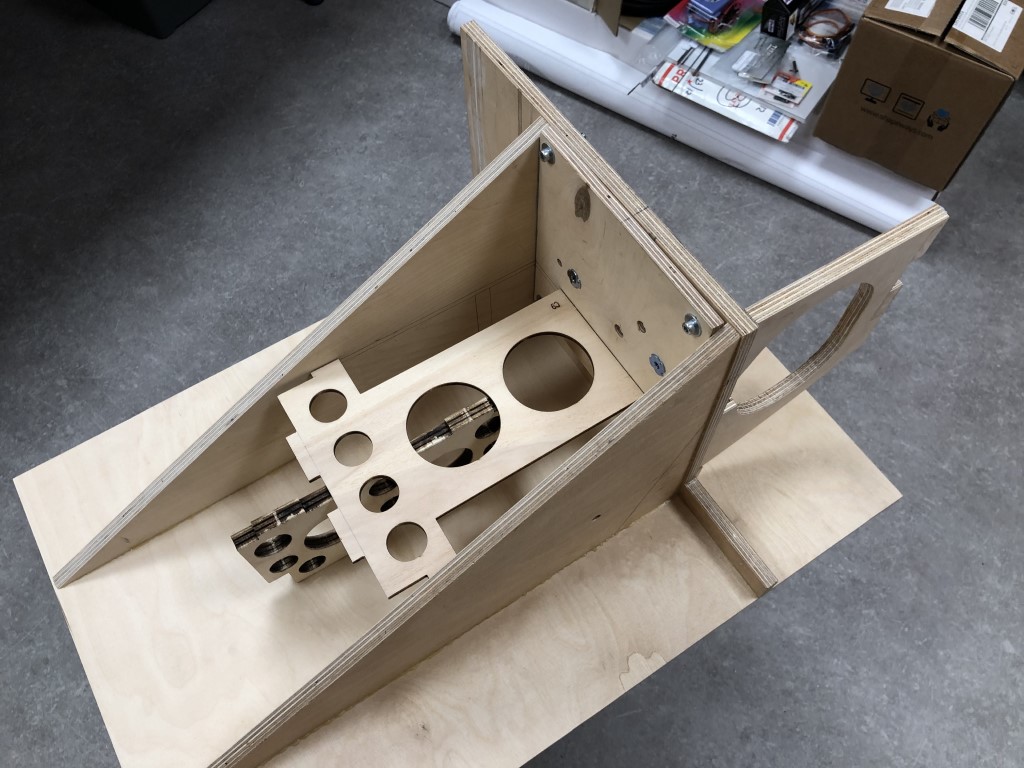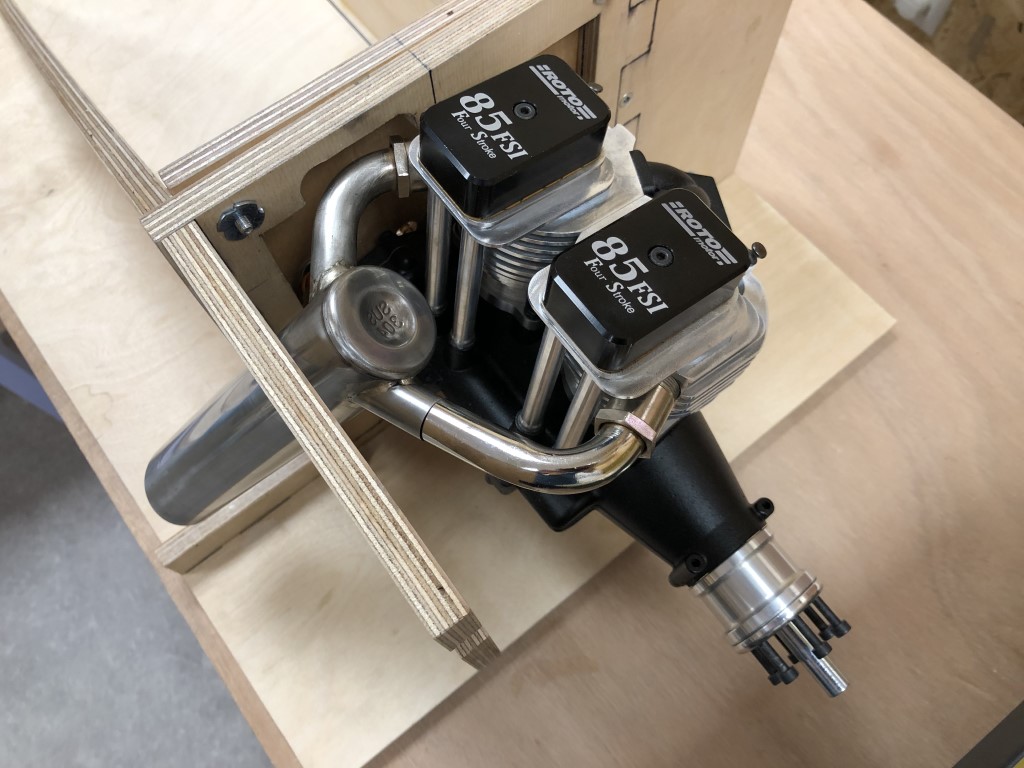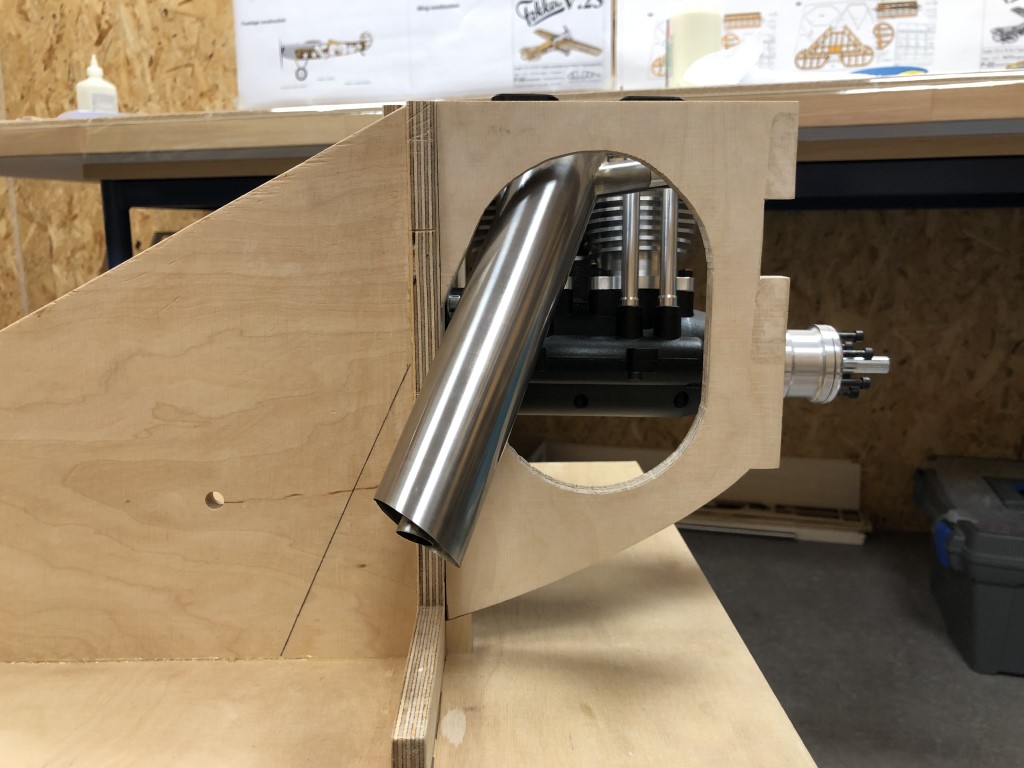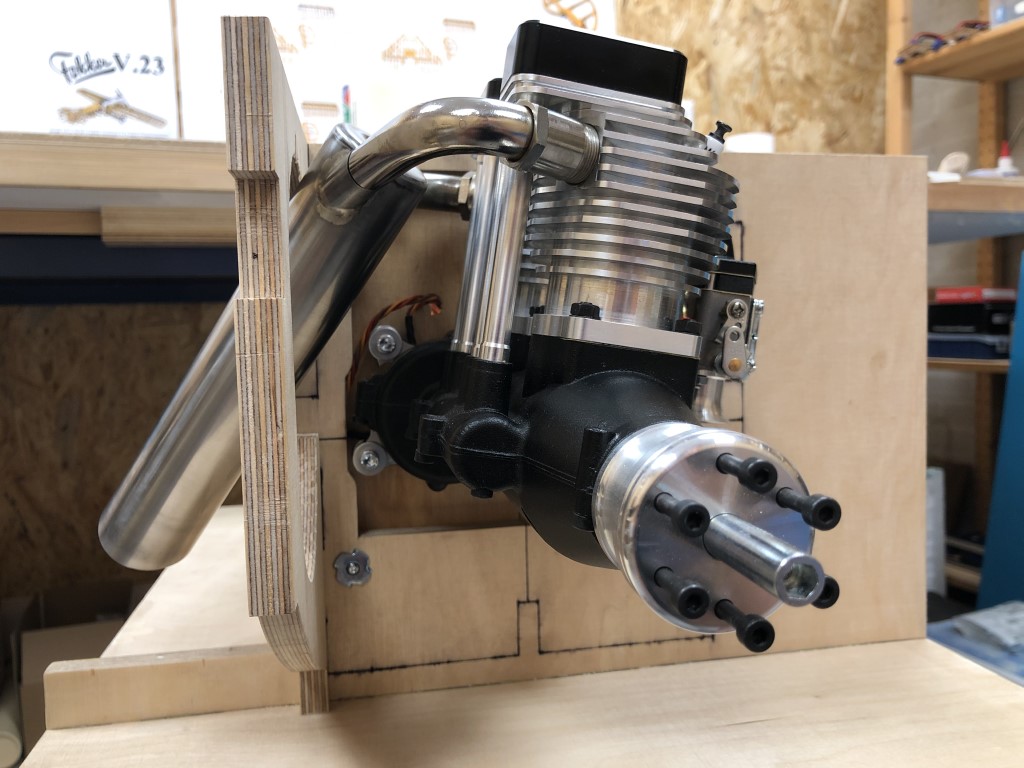I’ve finished up the rudder by rounding off the edges and blending in the transitions to the main spar:
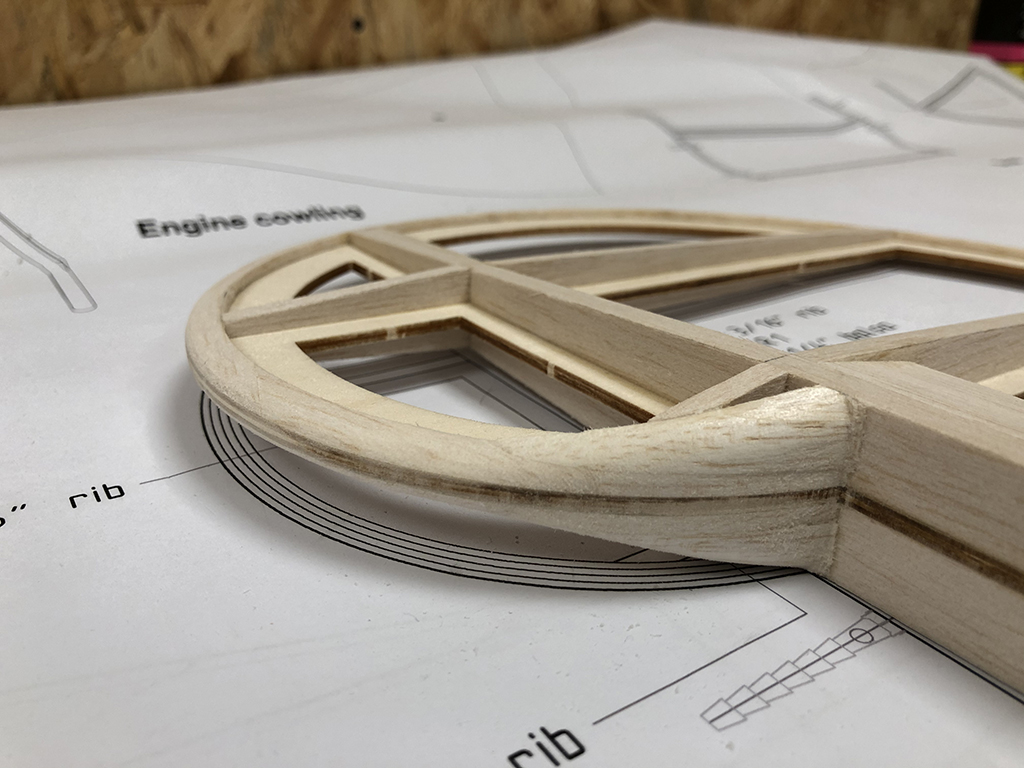

Now I’m moving onto the hinges. I have made a test piece to find the best hinge point, maximum throw and LE shape of the control surfaces. Looks like the best solution is the classical model hinge with the hinge point of the Robart hinges right between the surfaces. The hinge gap comes out great, very tight fit:
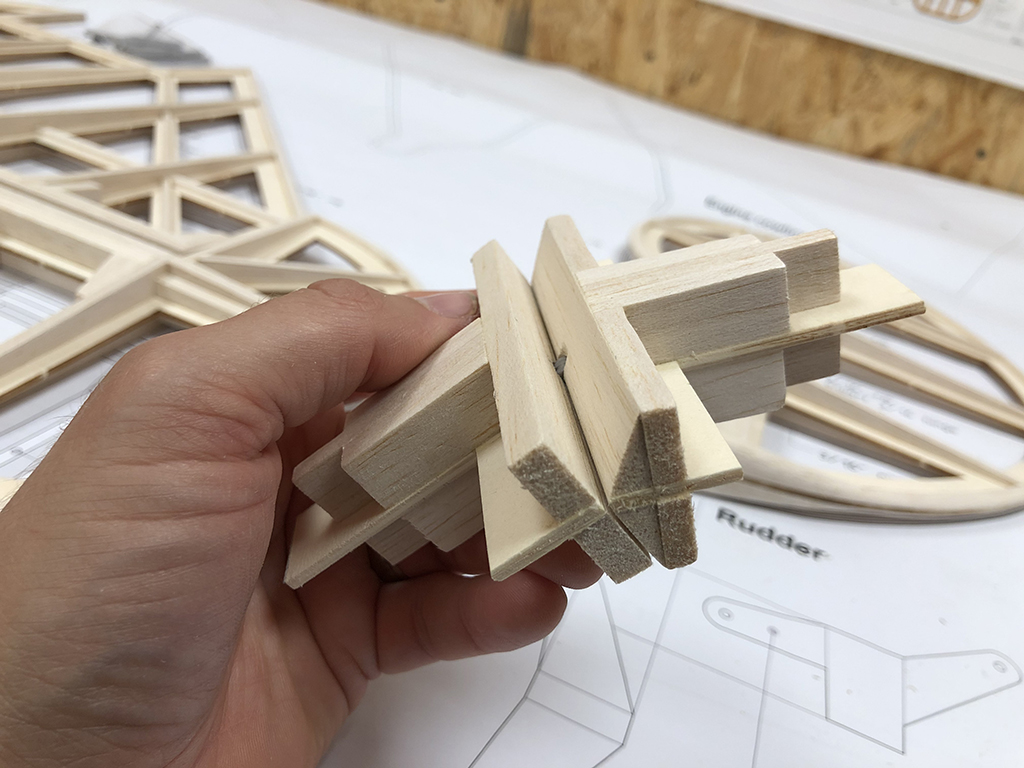
Though the transition from the angle LE to the ribs is a bit sharp, both visually and aerodynamically. So I tested rounding that edge off as well. Looks way better, and makes for a smooth transition to the upper and lower surfaces:
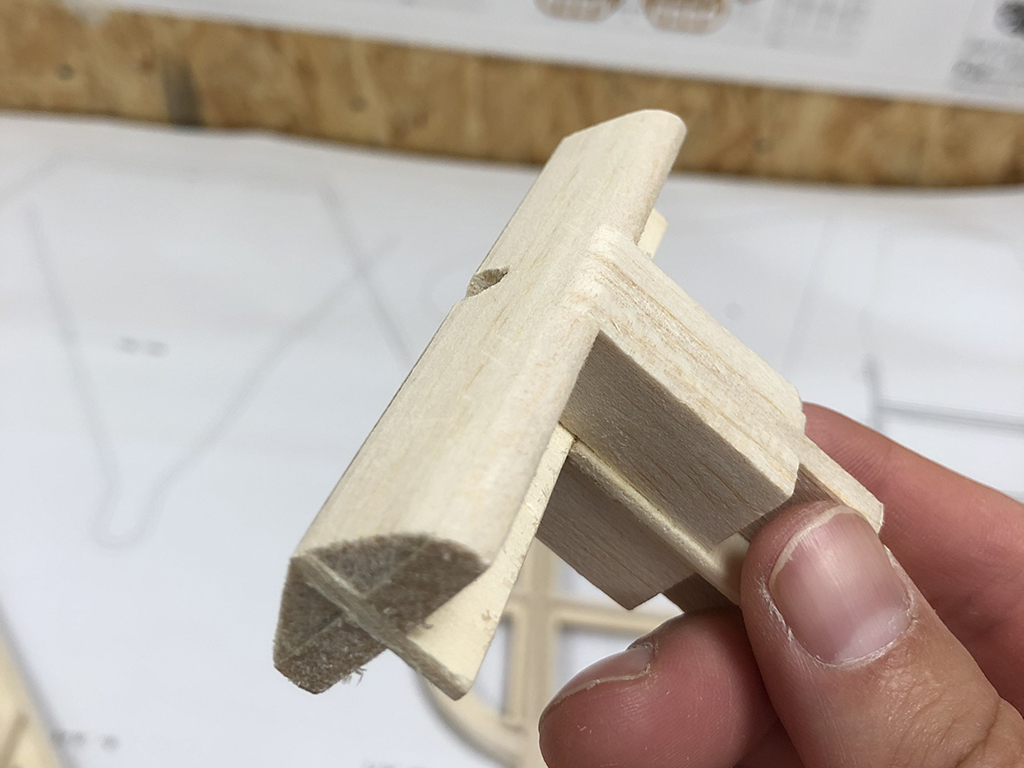
The resulting gap is also very small and at this scale it won’t be noticeable at all. Originally, the control surfaces had a tubular frame with the LE being a tube hinge in a concave wooden beam, but my tail section is too thick and the wood doesn’t have enough depth to create a perfectly round LE (or at this thickness, that wouldn’t look right for a plane from 1918) so I like the way this turned out:
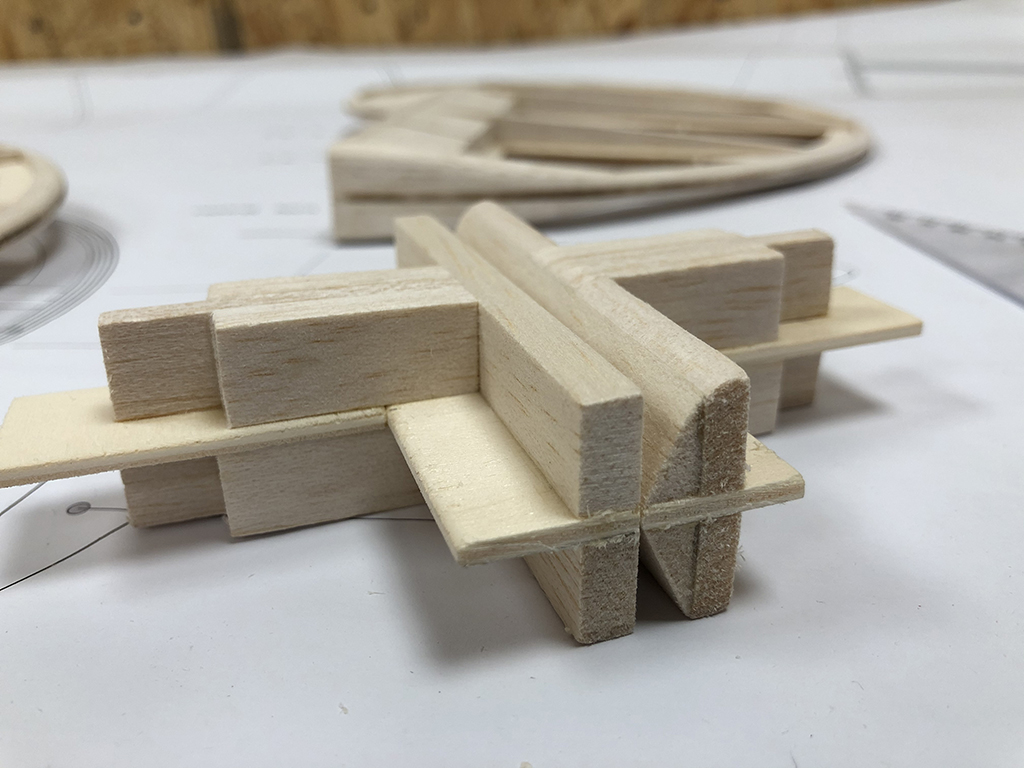
Also, the maximum throw seems to be more than enough at 22 degrees. The round edge makes for a smoother transition from stabilizer to elevator too:
